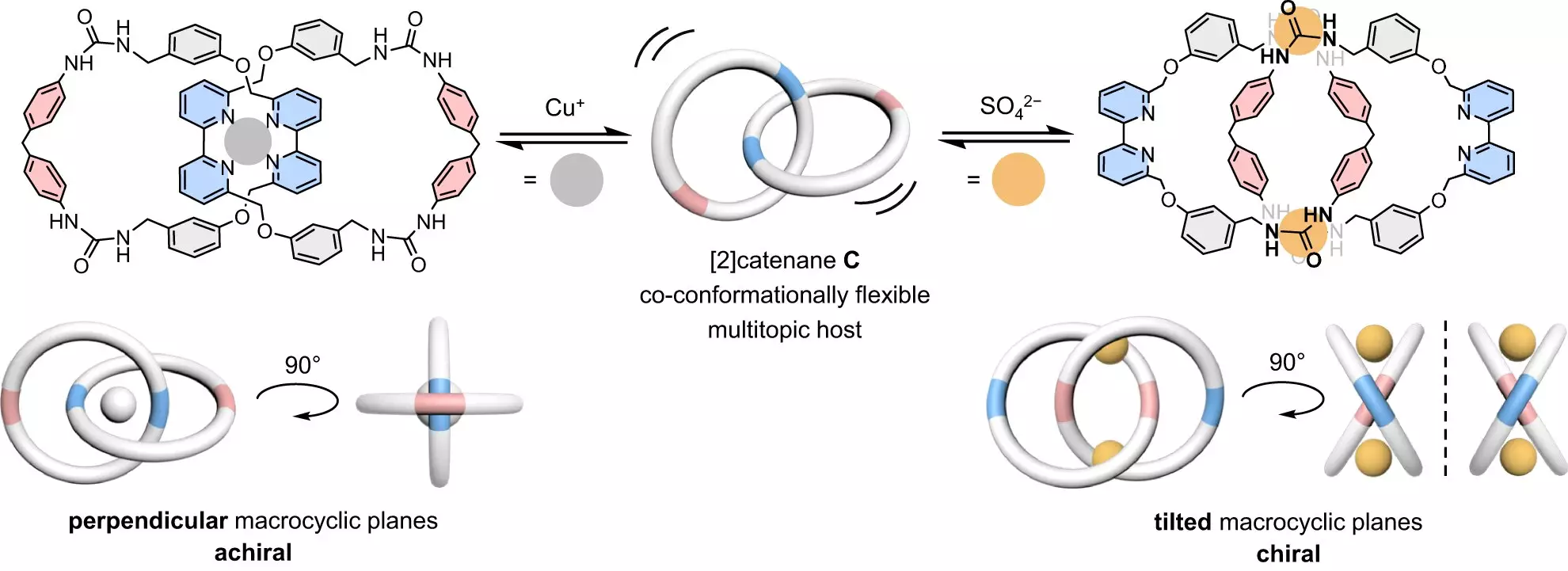In the world of materials science, certain everyday items can ignite a fascination for their engineering brilliance. Consider metal chains, handcuffs, or key rings; these objects are not merely functional but exemplify a sophisticated interplay of flexibility and strength achieved through the interlocking of rigid components. A similar concept manifests in the realm of molecular chemistry with catenanes—molecules featuring interlocked nano-sized rings that hold great promise for advancing technology. However, despite their intriguing properties, the challenges surrounding their synthesis have hindered broader applications. Recent breakthroughs suggest that the potential of catenanes could soon be unlocked, leading to advancements in both environmental and medical fields.
Recent Breakthroughs in Catenane Synthesis
A notable stride in the field has emerged from a research endeavor spearheaded by Professor Ho Yu Au-Yeung of The University of Hong Kong (HKU). In a landmark study published in *Nature Communications*, Professor Au-Yeung and his team successfully synthesized a catenane comprising two macrocyclic components that are not only rigid but also capable of free rotation. This unique design enables the catenane to selectively and robustly bind with both copper(I) cations and sulfate anions—ions that differ significantly in charge and structure yet are essential in biological contexts.
This remarkable ability arises from a nuanced design strategy. Traditionally, one might expect that the presence of a cation would repel an anion due to repulsive forces in charge interactions. However, to address this inherent conflict, the researchers ingeniously incorporated binding sites for both types of ions on each ring of the catenane. This adaptive mechanism allows the molecular structure to dynamically reposition its binding sites, much like a chameleon adjusting its hue to blend with different environments.
Implications for Environmental and Medical Applications
The capacity of the catenane to bind selectively to these ions opens up a wealth of possibilities. Copper(I) and sulfate ions play critical roles in various biological processes; thus, their selective extraction could have significant implications for environmental monitoring and biomedicine. For instance, the catenane’s adeptness at binding these ions may lead to innovative methods for recycling valuable metals from waste, thereby promoting sustainability.
In the medical sector, the potential extends to diagnostic tools. Just as traditional blood tests routinely measure sodium and chloride levels, similar technologies leveraging catenanes could facilitate accurate tracking of essential ions, providing invaluable data for patient health and well-being. The complexities of human health often hinge on precise biochemical interactions, and being able to selectively recognize and bind to important mineral ions could refine our diagnostic capabilities significantly.
Catenanes: The Future of Molecular Engineering
Professor Au-Yeung’s work puts catenanes at the forefront of developing advanced molecular receptors. The findings not only highlight catenanes’ switchable properties but also their versatility, positioning them as key players in future scientific developments. Following the success of their initial research, the team aims to further enhance the binding capabilities of catenane structures, targeting the simultaneous capture of various ions. Such advancements could lead to sophisticated technologies capable of responding to complex chemical environments, embodying a new era of molecular engineering.
The deeper we delve into the potential of catenanes, the more we understand their significance in bridging the gap between chemistry and practical applications. Their ability to adapt dynamically underlines the importance of flexibility in design, not only in crafting molecular structures but also in addressing the multifaceted challenges faced in modern science. The journey of catenanes exemplifies how creativity combined with rigorous research can yield groundbreaking results, inviting curiosity about what other hidden potentials in molecular engineering are yet to be discovered. With innovations like these on the horizon, the future indeed holds exciting promise for both science and society.


Leave a Reply